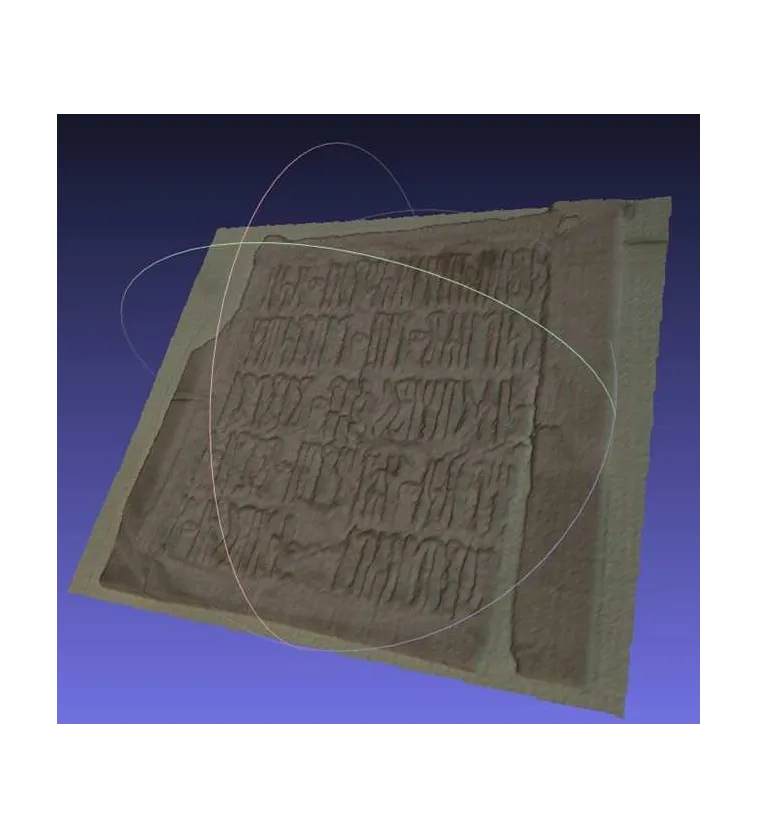
3D-Digitizing of Glaser Squeezes
- Hosting organisations
- BAS:IS-ÖAW Bibliothek, Archiv und Sammlungen
- Responsible persons
- Petra Aigner
- Start
- End
The project was funded by the National Foundation through the call Digital Humanities: Long-term Projects on Cultural Heritage (DH2014/02)
The Project and its Goals
The task of the South Arabian project “Pilot-3D-Digitizing of Rare Ancient South Arabian Ssqueezes, 19th Century Glaser Collection” based at the Austrian Academy of Sciences is to digitize the Glaser squeezes currently kept in the archive of the academy. The inscriptions from which these squeezes were taken are in the Sabaic, Qatabānic, and Minaic languages, ranging in date from the early seventh century BCE to the sixth century CE, and in length from one-line texts containing only a single name to the 136-line inscription of King ʾAbrehā from the dam at Mārib. The inscriptions cover a wide range of themes, recording such things as dedications to deities, construction and irrigation projects, and military campaigns. Regrettably, the conditions in which the squeezes were kept over the years in the National Library and then Academy’s archive have been far from optimal, and many have been damaged by water and mildew or else, and pressed flat by the weight of other squeezes piled on top.
Eduard Glaser
The approximately 2855 South Arabian squeezes – 700 of them are scanned within this project - are the work of the Austrian Semitist and explorer Eduard Glaser (1855-1908). Glaser undertook four expeditions, which led him to the region northwest of Ṣanʿāʾ, the region west and southwest of Ṣanʿāʾ, the area between Ṣanʿāʾ and Mārib and from Ṣanʿāʾ to Aden.
Technical Matters
The project offers an easy access to Glaser’s squeezes. Students as well as experts will be able to obtain information on the squeeze which they need for their research. With this in mind, the database contains available information on a certain squeeze, e.g. sigla, date, provenance, language, transcription, translation, quality of squeeze, damages, notes on drawings, concordance, and pictures. There are three kinds of pictures provided for each squeeze: an ordinary picture, for getting an impression of the current state of the squeeze; an analyzed picture, which has been proceeded to improve the view onto the grooves and pitches of the squeeze; and a 3D-model, which offers the possibility to rotate and zoom into the squeeze in detail.
Scanning of 700 squeezes by “Structured Light 3D-scanning” and postprocessing: VirtuMake e.U. (www.virtumake.com), Lerchenfelderstraße 129, 1070 Vienna
Project Team
Head of project: Petra Aigner / ÖAW, Library, Archive & Collections: Information and Service (ÖAW, BAS:IS) Cooperation: University of Vienna / Institute of Oriental Studies Employee: George Hatke Co-workers: Ronald Ruzicka, Lorenz Nigst Freelancer: Daniel Mahoney Scanning: Udo Fleischhauer (VirtuMake) 3D-Scanning: VirtuMake (Bernhard Mayrhofer, Andreas Schwirtz), Canon (Bernhard Mayrhofer) Host, database suport: ÖAW, ACDH-CH
Web App http://glaser.acdh.oeaw.ac.at/
Related Conference Ancient South Arabia: Kingdoms, Tribes, and Traders 31st of August – 2nd of September 2016, Austrian Academy of Sciences, Vienna, Austria Link to the conference website
Illustration Glaser Collection, GL1213a, AT-OeAW-BA-A-GL1213_02, http://glaser.acdh.oeaw.ac.at/gl/rec/110000348/0
